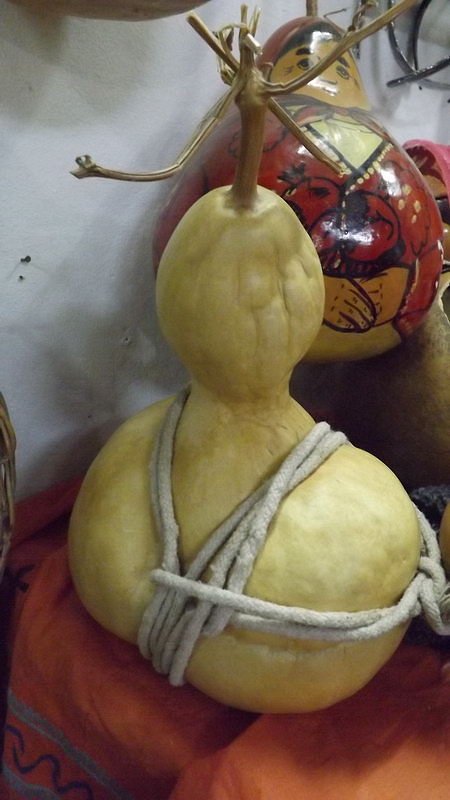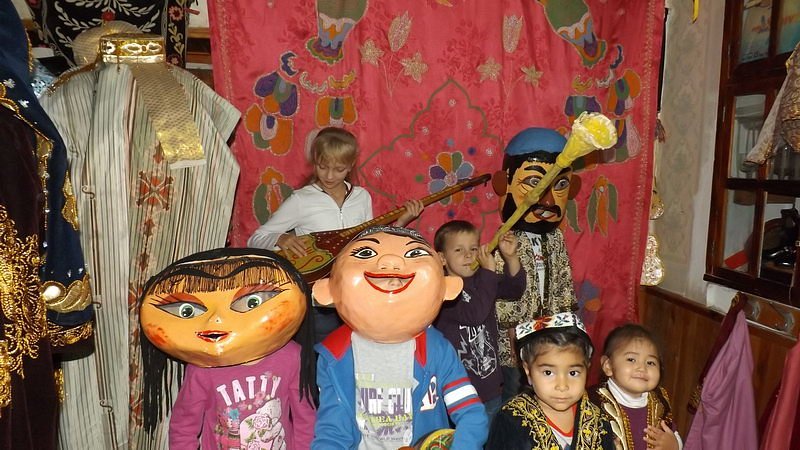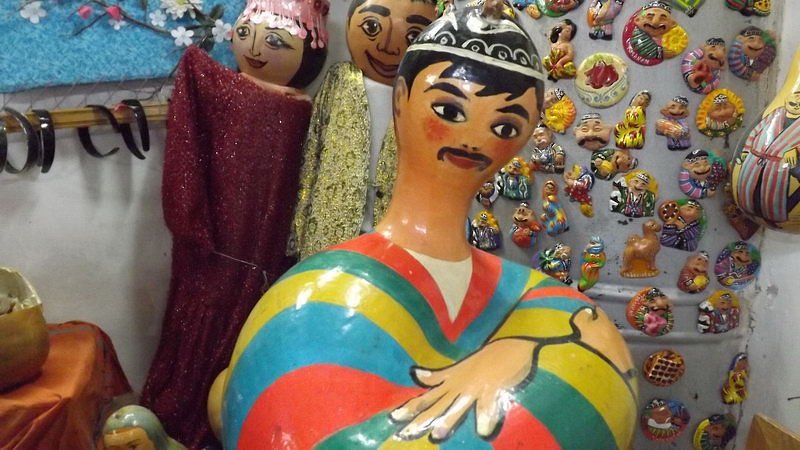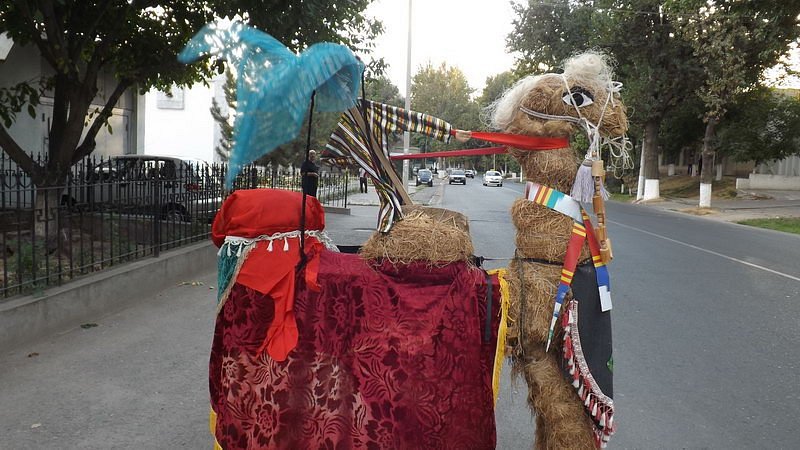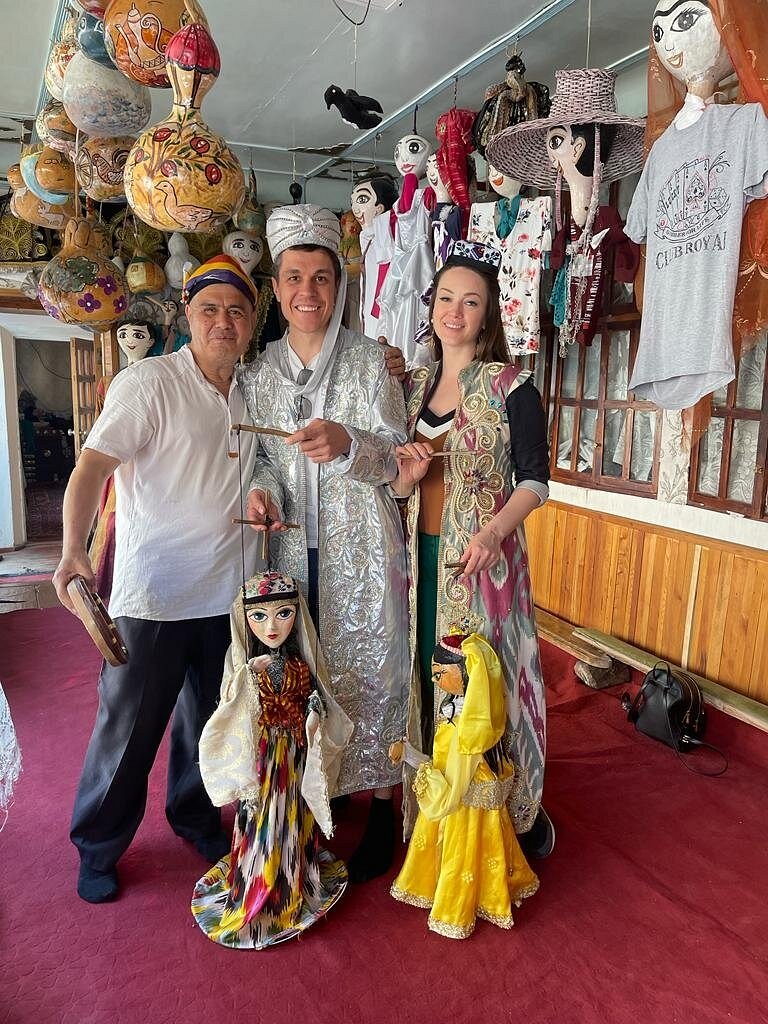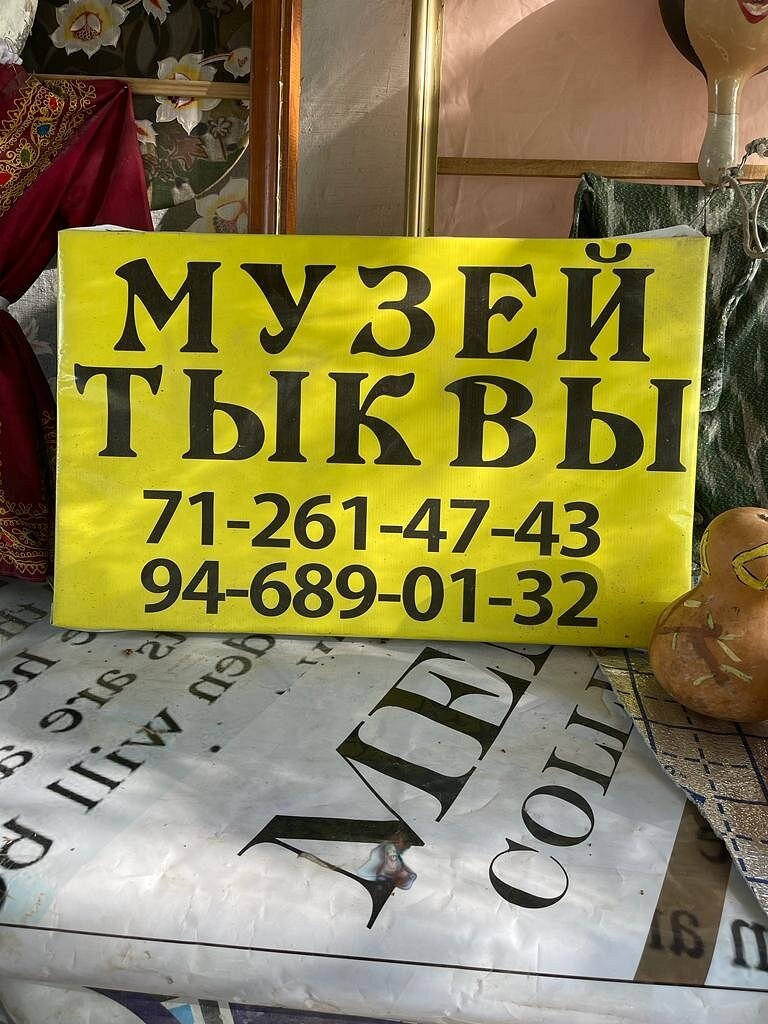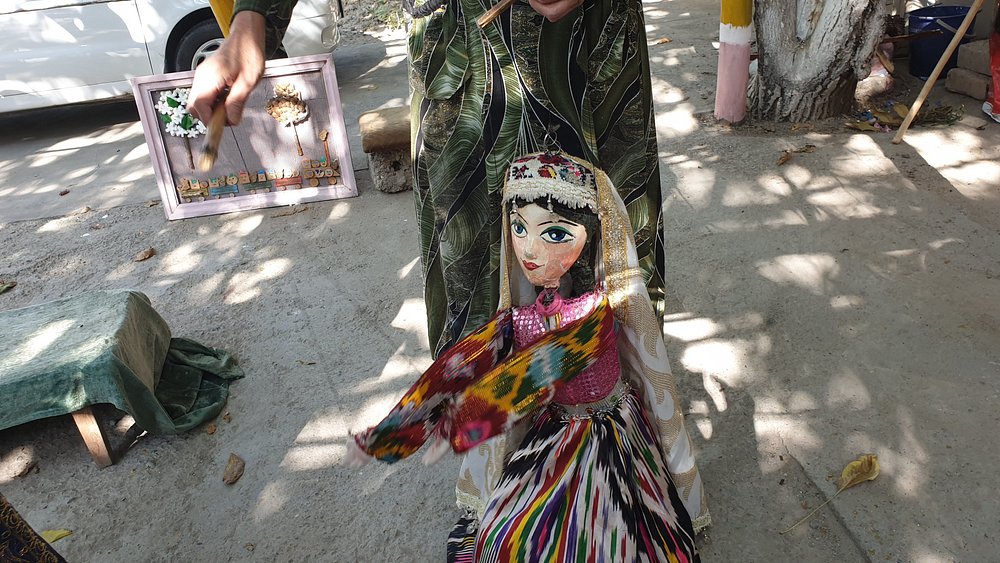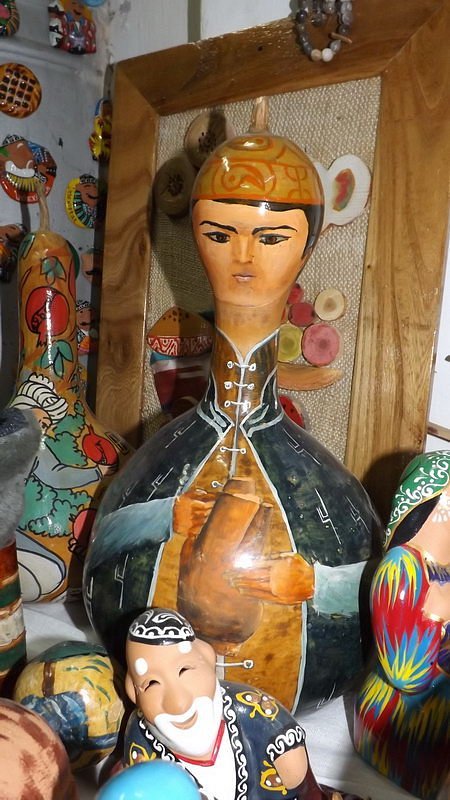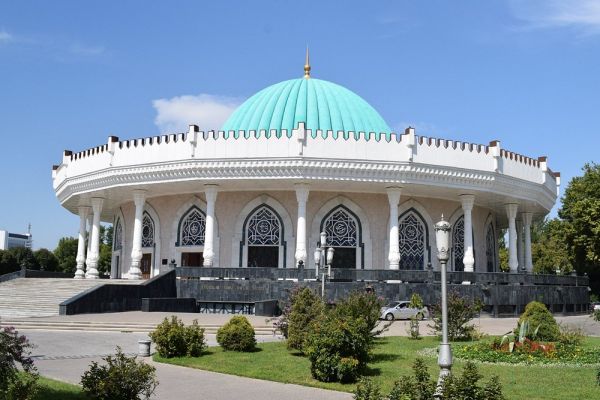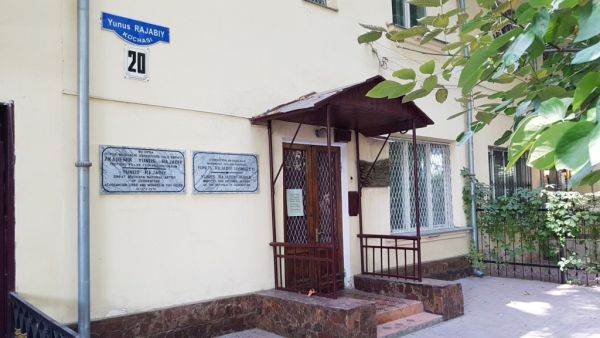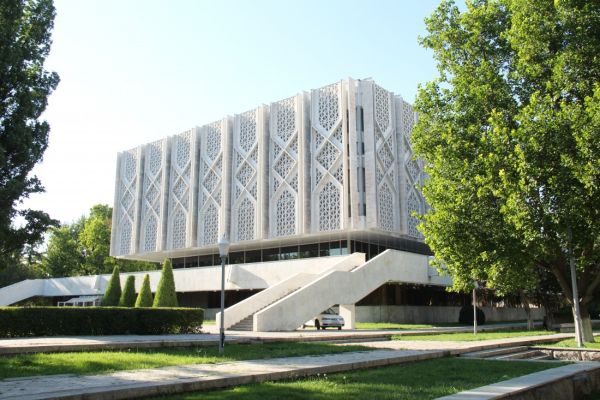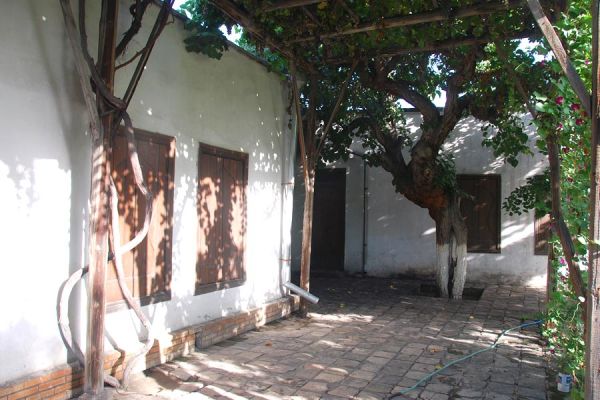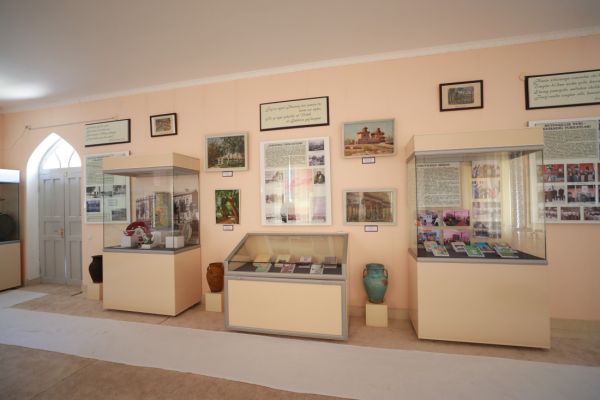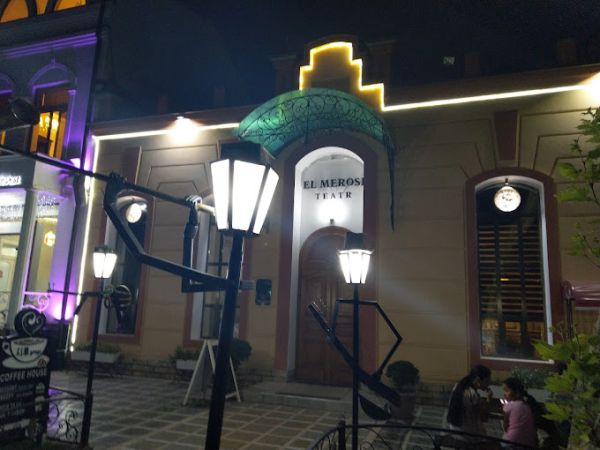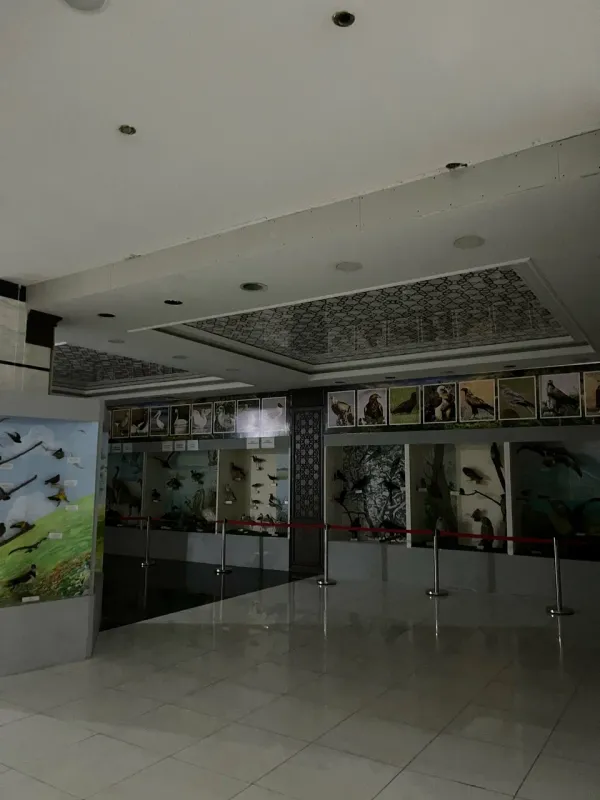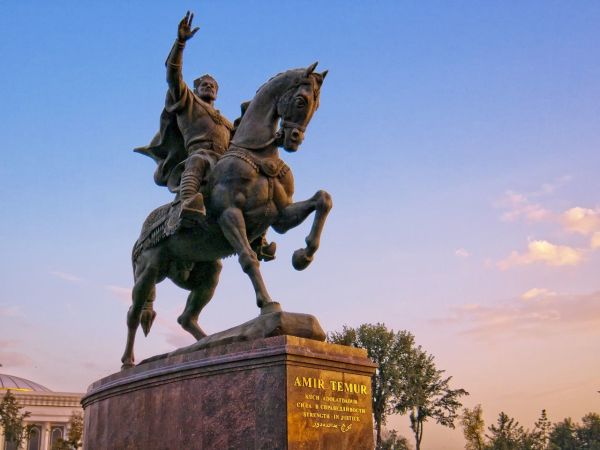Pumpkin Museum
Tashkent has an unusual Pumpkin museum, which has a warm homely atmosphere. You can learn almost everything about this melon crop here, and even unexpected ways to use it. The gates of the museum are always open for guests. A straw camel with a bright blanket standing next to them attracts attention. Visitors to the museum are welcomed as dear guests — they are treated to tea, tortillas and sweets. Pumpkins of various shapes and colors can be seen everywhere. There is a warm atmosphere of love and homely comfort here.
Exhibits of the Pumpkin Museum
The museum has more than 1,000 unique exhibits. Pumpkins of different colors, shapes and sizes fill the entire space.: they hang from the ceiling, decorate the walls and lie in the corners. There are a lot of objects made of pumpkins: paintings, masks, figurines in the national style, toys, musical instruments, dishes, lamps. All this is allowed to pick up and take pictures. Visitors can also try on the Uzbek national costume and take colorful pictures. If desired, you can buy yourself some kind of pumpkin souvenir or make it yourself.
The museum will show how the crop is grown, what varieties exist, and also tell about the manufacture of products. For a high-quality ripening of the fruit, its stems should be directed upwards. To get a pumpkin of an unusual shape, the owners bind it in the right places. The size of the fruits can be completely different.
The courtyard of the owners has a fancy arch like a vine, which is decorated with many private houses. However, instead of grapes, a pumpkin is wrapped around the metal frame, its green unripe fruits hanging directly over the head. To prevent them from falling, they are tied with a strong rope to wooden elements. Also in the yard you can see blanks for handicrafts, which must be well dried before work. This process has been going on for about a year. In winter, the fruits are stored in a well-ventilated area.
When the pumpkins harden, the top layer is removed from them, and only after that they are painted and varnished. It can take several years to create one complex pumpkin craft. Many of the products reflect the unique Uzbek flavor and local customs. The pumpkin puppets look very bright. Looking at them, it is impossible to determine that the material for the toy was a pumpkin. The owner Dildora Rahimovna sews bright outfits for dolls herself, makes accessories for them.
Tourists, neighbors, journalists, and even ambassadors from other countries are happy to visit the museum. Sometimes the spouses arrange holidays during which they sing Uzbek songs, play folk instruments, and show puppet shows. Children often come here — they are always welcome. The owners regularly organize workshops for the children, where they teach them how to make crafts.
The Pumpkin Museum works closely with boarding schools where children with disabilities live. The Pulatov couple arranges performances for them, gives them their crafts.
History
The museum has been operating for about 15 years. Its creators are a married couple of simple school teachers — mathematician Bakhtiyor Yunusovich Pulatov and physics teacher Dildora Rahimovna Pulatova. The couple worked at the school for many years, raised three daughters and got used to being surrounded by people. When the Pulatovs retired and the children moved out, they had a lot of free time. At first, they grew an ornamental pumpkin locally called "tomosh kovok" for sale. At the same time, the Pulatovs kept the fruits of an unusual shape in their yard. One day, an artist friend suggested painting a dried fruit. The owners really liked the result, and they decided to learn how to turn an ordinary pumpkin into an original craft.
Currently, the Pumpkin Museum is known far beyond the borders of Uzbekistan. Melon seeds are sent to the family from many countries. There are 32 varieties of pumpkins in the Pulatov garden.
